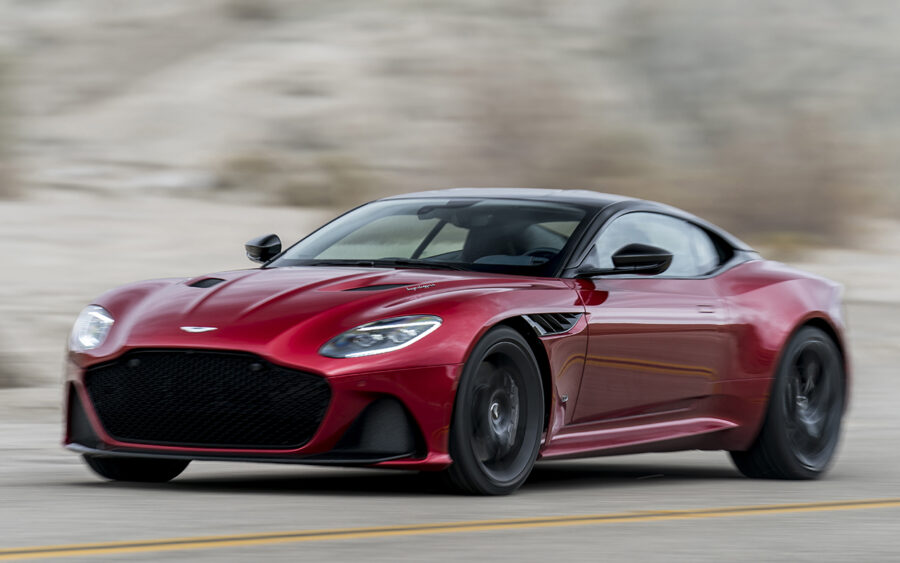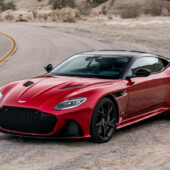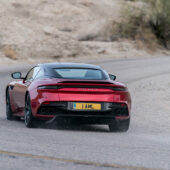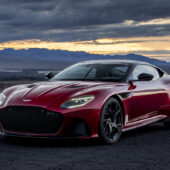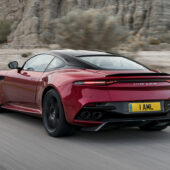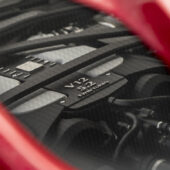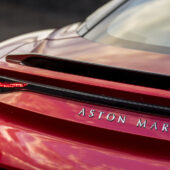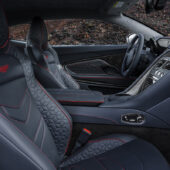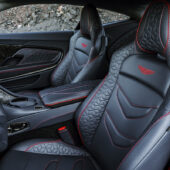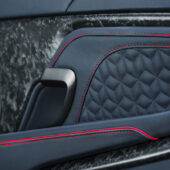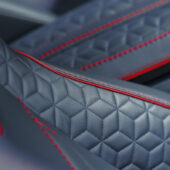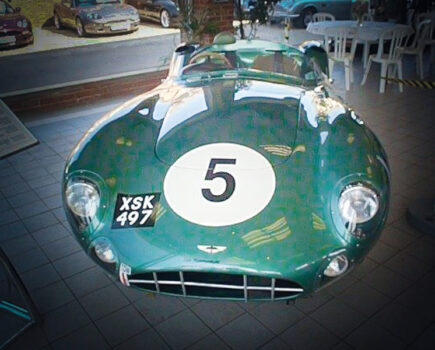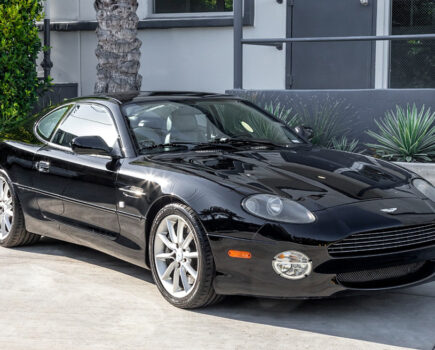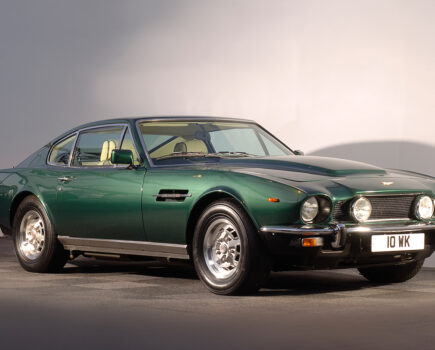With awe-inspiring performance to match its heart-stopping looks, the Aston Martin DBS Superleggera is a seriously impressive car. We get behind the wheel to see how it stacks up
Words: Kyle Fortune
We’ll get to the ‘superlight’ part of the Aston Martin DBS Superleggera’s name in a second because right here and now, it doesn’t matter. Just look at it. Beautiful is probably the wrong word here; its handsome, a car that’s muscular and chiseled, graceful but with a pugnacious edge. The DBS Superleggera’s familial relationship with the Aston Martin DB11 is clear, but it’s also distant enough to be distinct.
That arresting bodywork is built extensively from carbon fibre which can be optioned to be visible in places; areas like the roof, wing mirrors or bonnet vents, for example, can be specified in naked black weave. Doing so does little to reduce the kerbweight – comfortably in excess of 1700kg – so only thing that’ll be superlight in relation to the DBS will be your bank balance.
Aston Martin’s flagship models have traditionally had to find a tricky balance between super-GT and supercar, with mixed results. Modern Gaydon-era Aston Martin has been adept at finding that sweet spot, from the era-bridging V12 Vanquish through to its DBS replacement, the to this: the DBS Superleggera. Each has taken the model beneath it and wound up every element to create something that’s faster, more engaging and exotic at the same time. Each, however, has done so while still being imbued with some of the long-legged continent-crossing capability. The idea of jumping in your DBS Superleggera and spearing across a continent may be quite fanciful these days but the thought that it could is somehow deeply satisfying.
The DBS Superleggera’s 5.2-litre V12 is secreted as far back as possible and has enough power for a 0-62mph sprint of 3.4 seconds and 100mph in under seven seconds; top speed is 211mph. Turbocharging is a modern-world necessity but if the result is a V12 engine that produces 725hp at 6,500rpm, underpinned by a faintly ridiculous 900Nm of torque from 1,800–5,000rpm, then so be it. The engine’s torque is so mighty that gearbox supplier ZF had to introduce a new transaxle-mounted eight-speed automatic and ask that Aston Martin’s engineers torque-limit the engine’s output at low revs to give the gearbox a chance. That automatic does without the twin-clutch mechanism of its most obvious Ferrari 812 Superfast rival, so it’s not going to offer quite the whip-crack speed of response when shifting, but really it’s swift enough. While the DBS doesn’t have the outright power figure of its highly-strung naturally-aspirated Italian foe, it’s got the sort of low-midrange muscle that’s arguably more relevant in a road car, and is more in-keeping with the car’s GT character.
The powertrain and chassis modes on offer are GT, Sport and Sport Plus. There’s no track setting because the DBS Superleggera isn’t a car that owners are ever likely to use on a track – they’ll have something else for that. Indeed, the DBS Superleggera is the perfect conveyance to criss-cross the UK to meet your race car at a circuit; the boot’s big enough for your suit and helmet and the performance sufficient enough to keep you sharp. It’ll look incredible parked alongside your team’s race transporter too.
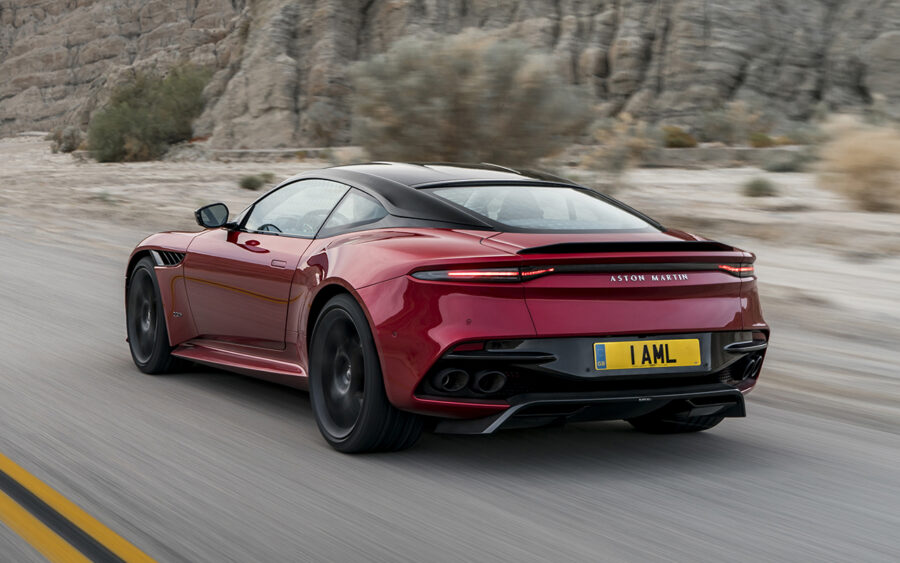
If there’s any disappointment with the DBS Superleggera, It’s inside the cockpit. In isolation it would be fine; indeed, the cabin’s look is Aston’s current technical design and finishing is superb, but it’s a few DBS badges and some optional stitching away from that of the DB11 – a car which can be had for significantly less money. The infotainment feels like the last-generation Mercedes-Benz equipment it is, although it works, albeit a little bit clunkily. Given the drama of the outside and its own distinct character, it’s like Aston Martin just forgot to go the distance inside, which is a shame.
There are two starting options: a long push of the button if you want to remain friendly with your neighbours, or a short prod if you wish to be seen – because you’ll be heard. It’s a wonderful sound when you do so, and being an Aston Martin you’re unlikely to receive the sort of scorn you’d do so if you were in something red or more wedge-shaped from the Italian end of the market.
Pull the large paddle for first then trickle away, the DBS doing dignified departure with ease despite its rippling intent. You sit low and you feel the car’s scale, the wide rear arches visible in the rear view mirrors which are situated on lengthy housings to allow them to afford a view over that rump. It’s the height of the scuttle, something common with the DB11, that really restricts; the rakish line of the windscreen makes for a slim view of the road ahead. That’s not helped by the bulge of that shapely bonnet which seems to go on forever. Thumbing the button to raise the seat helps, but even so it takes a while to get used to the DBS’s dimensions. The suspension is supple and the ride at town speeds finely judged despite 21-inch alloy wheels wearing thin-walled, high-performance Pirelli P-Zero tyres. Only the brakes feel slightly disappointing with initial bite lacking; even if there’s an abundance of retardation after that, the pedal’s not brimming with much in the way of delicacy or feedback.
GT mode is the default here, with Sport adding some frequency from the road which at slower speeds only serves to unsettle the DBS. As you gain speed – something never an issue with the V12’s abundant output – the ride in Sport feels more planted, less brittle, the dampers working better when they’re dealing with things at pace. The steering is a highlight; there’s decent weighting and reassuring directness and its response quick, delivering something approaching feel through its thick-rimmed wheel that’s the squared-off item that’s been an Aston Martin option since it debuted on the One-77. If like us you’d rather a round one, choose the GT Wheel instead.
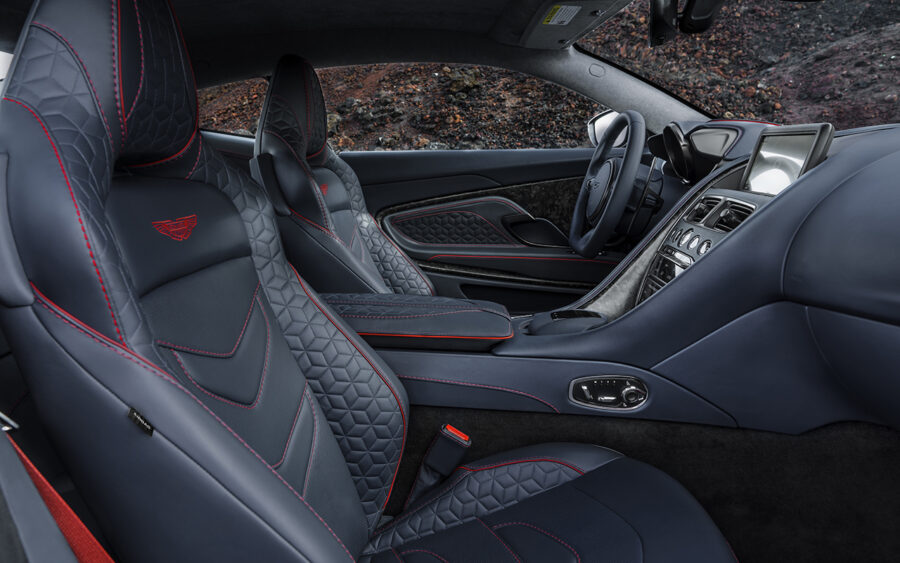
When the roads are quiet and interesting, the DBS Superleggera really starts to deliver. The engine is mighty; its response might be ever so slightly delayed but when it starts to move it does so with such prodigious thrust you’ll forgive it that as you find yourself involuntarily chuckling every time you push your foot to the floor. You’ll do so for the sheer physicality of the acceleration but also the soundtrack that accompanies it, the V12’s notes rich and characterful, although the pops and bangs in Sport and Sport+ do feel a touch contrived and uncouth. The temptation to keep tugging the paddles as you push the engine harder is reined in by the realisation that if you don’t you’ll be deep into three figures in no time, which is neither legal nor wise.
What’s impressive is that even at ordinary road speeds the DBS feels special, its handling finely judged, turn-in alert, the rear pushing it through the bend with incredible traction when you consider the forces those tyres are being asked to deal with. That’s on dry roads at least; the DBS Superleggera is certain to test the threshold of its traction and stability systems regularly when it’s damp.
Aston Martin DBS Superleggera: our verdict
The DBS Superleggera lives up to its super GT billing very credibly indeed. It’s as adept at a fast cruise as it is when you take leave for a moment and revel in its abilities above that. The DBS has an engine that’s never ever left wanting, and a chassis that’s equally as able to exploit what that V12 is producing. It’s a hugely compelling, incredibly entertaining and engaging car to drive that achieves Aston Martin’s specific positioning for it in this rarefied market, which in turn makes it one of the most complete and satisfying cars when compared to its competition. It’s different enough from its Vantage and DB11 relations too, which is a neat trick.
We doubt there’s a better-looking car in production today, so it’s good to know it comes some real substance. The Aston Martin DBS Superleggera is a heavy-hitter in a high-expectations marketplace – and one of Aston Martin’s finest.

